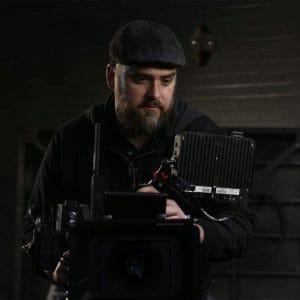Choosing The Right Lenses For Your Project: Know When To Compromise
In a perfect world, we’d all go for the best of the best and Panavision would have to manufacture a whole lot more C series anamorphic primes right?
Well unfortunately, production budgets are not always perfect and don’t have the capital to justify acquiring really expensive lenses. It doesn’t matter how much you try to convince the producers or stakeholders about the aesthetic need for your high dollar lens choice, it falls on deaf ears.
Which is okay and understandable, so you compromise for a less expensive spherical lens choice no doubt.
But when do you stand up for the integrity of the shot and insist that they make room in the budget for an extravagant lens expense.
Well, we need to look at a couple factors that need to be considered.
Let’s do this!
Type of Production
What type of production are you gearing up to shoot? From documentaries and commercials to episodic TV and feature films, it can be difficult pulling the trigger on an appropriate lens choice. There’s no rules so you’re not gonna find boundaries to guide you in.
With Documentaries or Reality TV, you typically want to acquire a spherical zoom lens of sorts whether it’s PL, E/A or EF mount, that’s decided by your camera’s native mount or your access to an adapter. Rolling around with primes is not adventitious in that scenario unless you’re shooting reenactment b-roll that needs to be of a higher caliber to stand out as cinematic. It’s likely you will not be in a run n’ gun situation then.
With Commercials, Episodic TV or Films, you’re going to have more time to dial in your shot so naturally, you’re going to want to use better lenses that give you more depth of field and offer a unique touch to the image. This is a situation where you’d want to insist they make room in the budget for a better lens choice. But let’s say you get stonewalled and you’re asking for a full prime set, consider choosing one wide lens and one long lens and adjust your camera placement to work around the lack of prime choices.
Lighting Situation
The lighting situation alone can help guide you in. Are you going to have access to a 5 ton grip truck to give you every light you need or are you going to be in a low lit situation where you need a faster lens. Let’s say you’re using available light and it’s super low lit, then you’re going to want to go with a lens option that has a wider maximum aperture (lower minimum f-numbers) to see what your eyes can’t. Something around an F1.5 or F1.3 gives you much more flexibility to expose enough light to the sensor to cut down on noise in your image and avoid underexposure.
If you have access to lights and you’re able to control the amount of light hitting the sensor, then you’re not limited to really fast lenses. You could go with some Cooke i-series anamorphics that have a maximum aperture of F2.3 or some Angenieux Optimos (F2.4) and be just fine.
Budget
Sometimes there just isn’t enough money to grab the lenses you need. You really want those Arri/Zeiss super speed primes, but the producer can’t justify it in the budget. Thankfully there’s companies like Rokinon and Sigma that offer affordable, fast zoom/prime lens options… And they still look pretty damn good. Sometimes it comes down to how much profit you want to make and if you can pay your bills that month.
Don’t insist on high dollar lenses when you simply cannot afford it. If you’re wearing multiple hats and you’re the producer, shooter, editor, etc. — Don’t shoot yourself in the foot if that extra $500 or more could really help you out financially this month. You can still get beautiful imagery with lenses that don’t break the bank.

Camera Choice
Okay, so the producer wants you to shoot on a camera you wouldn’t typically choose and it doesn’t have anamorphic capabilities built into it’s design. Well that decision is made for you and you’ll have to stick with spherical. Simple as that. Maybe you’re using a camera that has anamorphic capabilities and the budget is there to choose freely. Go crazy and get the best imagery you can muster.
Today with large format cameras, lenses are being made to cover their large sensors. The majority of S35 lenses porthole with LF sensors so you’re not going to be able to use your favorite S35 lens set. You’ll be forced to use LF lenses, but the same doesn’t go for S35 cameras. They have S35 PL to LPL mount adapters available so these LF lenses are usable on all cameras.
Still having a problem choosing?
Test the lenses first!
Don’t be afraid to ask your local rental house to stop by and spend a few hours there testing out various lenses to get a better perspective on your available options. Or hell, take a drive down to LA and visit the Panavision headquarters and schedule some time to test out their excellent line of lenses they offer and educate yourself.
This will give you a better understanding of your options and how to make critical decisions when choosing the right lens for your next production.


